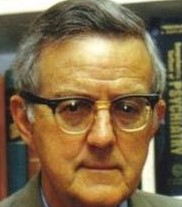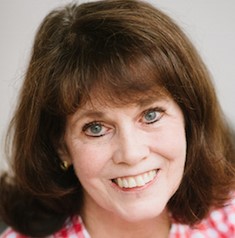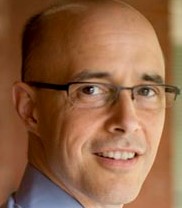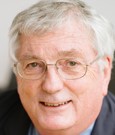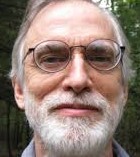The Division of Perceptual Studies (DOPS) is a research unit housed administratively within the Department of Psychiatry and Neurobehavioral Sciences, University of Virginia Health System. It is the oldest and most productive university-based group in the world devoted exclusively to the study of phenomena that challenge contemporary mainstream physicalist orthodoxy regarding the relationship of brain and mind – the belief that everything in human mind and consciousness is produced solely by physiological processes occurring in the brain – and in particular phenomena suggesting the possibility of post-mortem survival.
Contents
Historical Overview
DOPS (originally called the Division of Parapsychology, then the Division of Personality Studies) was founded in 1967 by Ian Stevenson, who at the time was chairman of the Psychiatry Department. Stevenson became the director of DOPS and the Chester F Carlson Professor of Psychiatry, a position he held for 35 years. He is best known for his work on cases of the reincarnation type (CORT), but he worked on many other topics in psychical research as well, including mediumship, apparitions, near-death experiences, spontaneous cases of telepathy, and experimental psi research.1For an overview of his research and a complete bibliography, see Kelly (2013).
In 1995 Bruce Greyson, who had worked at the Division of Parapsychology in the 1970s while doing his psychiatric residency at UVA, returned to DOPS, and in 1998 he became the first occupant of the Bonner-Lowry Chair in the Department of Psychiatry and Neurobehavioral Sciences. Upon Stevenson’s retirement in 2002, Greyson became the Director of DOPS and the Carlson Professor. His research focus, both in the 1970s and since his return, has been near-death experiences and related phenomena.
Faculty member Emily Williams Kelly, who came to the Division of Parapsychology in 1978 as Stevenson’s research assistant, continued her work on diverse topics, including NDEs, CORT, mediumship, experiences occurring near the end of life, unusual psychophysiological phenomena, and the contributions of FWH Myers, until her retirement in 2021.
In 2012 Jim B Tucker, a child psychiatrist who had worked on CORT cases for several years, first with Stevenson and then, after the latter’s death in 2007, on his own, became the second occupant of the Bonner-Lowry Chair. After Greyson’s retirement in 2014, Tucker became Director of DOPS. Tucker retired and left the Bonner-Lowry Chair in January 2025. In July 2025 he was succeeded as Director of Research and holder of the Bonner-Lowry Chair by Julie Exline.
In 2016 Kim Penberthy joined DOPS’s faculty as Carlson Professor and began research on psi phenomena associated with meditation. Her current interests include altered states of consciousness, mindfulness and health, and experiences in hospice. Other recent additions to the DOPS research staff include Marieta Pehlivanova, Marina Weiler, and Philip Cozzolino.
In 2008, a generous donation funded the establishment of a state-of-the-art EEG lab under the direction of cognitive neuroscientist Edward F Kelly and electrical engineer Ross Dunseath. The lab – called the Ray Westphal Neuroimaging Laboratory – is intended to support research on altered states of consciousness and psi, especially in exceptional subjects. The lab is currently under the direction of David Acunzo.
The phenomena studied at DOPS have included claimed memories of previous lives among young children (CORT), near-death experiences (NDEs), out-of-body experiences (OBEs), mediumship, apparitions, deathbed visions, after-death communications, and psi phenomena (various types of ESP and PK). DOPS researchers have produced hundreds of articles in refereed journals, scores of book chapters, and dozens of books.Following are a few selections of historical and current research from that large corpus.
Historical Research
Cases of the Reincarnation Type (CORT)
In 1960, Stevenson published two papers2Stevenson (1960).that reviewed ostensible cases of reincarnation of young children that he had unearthed in old literature. These papers attracted the attention of Chester Carlson, the inventor of the Xerox process, who launched Stevenson and his colleagues on the still-continuing investigation of contemporary CORT all over the world.This research produced not only numerous journal articles, but books reporting in detail cases in India, Sri Lanka, Brazil, Alaska, Lebanon, Turkey, Burma, Thailand, Europe, and America.3For a list of these books, see https://med.virginia.edu/perceptual-studies/publications/books/ Over 2500 cases have been collected and coded into a multi-variable database.
Of exceptional importance are cases in which the child had an unusual birthmark or birth defect corresponding to a similar mark – usually a fatal wound – on the person whose life the child seemed to be remembering. In Reincarnation and Biology4Stevenson (1997). Stevenson published over 200 such cases that he had investigated, including 43 in which medical records confirmed the close correspondence between the child’s birthmark or birth defect and the (usually) fatal wound on the deceased person. Such cases are of particular importance in suggesting physiological effects of mental processes – in this case, a kind of post-mortem psychokinesis (PK). In addition, they, like all CORT, bear strongly on the question of the etiology of individual differences, namely, whether such differences arise solely from chance, genetic makeup, and environmental factors, or whether there may be additional factors in play.
Near-Death Experiences (NDEs)
Stevenson began investigating NDEs in the 1960s, even before the term ‘NDE’ had been coined. Since then he, Greyson, and other colleagues have collected and investigated over 1000 cases which, like CORT, have been coded and entered into a multi-variable database, and analysed and reported in numerous publications.Examples of a few published studies follow.
Although there are features of NDEs that recur frequently and consistently across large numbers of cases, individual reports vary widely in the number and kind of features reported. It was important, therefore, to provide researchers with some means of judging what qualifies as an NDE and what does not.In 1983 Greyson developed a quantitative Near-Death Experience Scale consisting of 16 features that fall into four clusters, namely, Cognitive, Affective, Paranormal, and Transcendental Components.5Greyson (1983). This scale has greatly increased the ability of researchers to standardize the identification of NDEs and test hypotheses about their causes and mechanisms.
The NDE scale has also improved investigators’ ability to determine the incidence of NDEs. In 2003, Greyson published a survey conducted at the University of Virginia Hospital of 1595 cardiac patients, which showed that NDEs were reported by 10% of patients who had suffered cardiac arrest and 1% of other cardiac patients.6Greyson (2003).
DOPS researchers have analysed and reported features of NDE cases that they suggest support the hypothesis of survival after death.7Cook et al. (1998). First is enhanced mentation, including the vivid and rapid revival of memories,8Stevenson & Cook (1995). at a time when brain functioning is decreasing or even absent. Second are reports of being out of the physical body and viewing it from a different vantage point. Third, and closely related to this feature, are reports of perceptions of verified events that the patient could not have perceived normally.
DOPS researchers have also undertaken the study of another important question, namely, that of how close to death those reporting NDEs really are.In 1990 they published an analysis of the medical records of 58 patients who had reported an NDE to DOPS.9Owens et al. (1990).Of these, 28 were so close to death that they probably would have died without medical intervention; 30 others were not in danger of dying, although most of them thought they were. A comparison of the two groups showed that overall the features of both were closely similar, but those close to death were more likely to report seeing a light and having enhanced cognitive functioning.The latter finding is of particular importance, suggesting as it does that as brain functioning decreased, mental functioning increased, contrary to what a materialist view of mind-brain relations predicts.
In 2010, Greyson published a review of historical and contemporary NDEs in which the experiencers encountered the apparent spirits of deceased persons who were not known at the time to have died, or who had never even been known to the experiencer.10Greyson (2010).Such cases, sometimes called ‘Peak in Darien’ cases, cannot be dismissed as expectation or wishful thinking, as sceptics often do for other instances of apparitions, because there was no expectation involved. They challenge directly the hypothesis that NDEs are subjective hallucinations, and they also bear directly on the question of the post-mortem survival of consciousness, especially since, in some cases, strong motivation on the part of the deceased individual to communicate a message was apparent.
Mediumship
The study of trance mediums who seem to be communicating with deceased persons has long been central to survival research. DOPS has also been involved in mediumship research, particularly with regard to what Stevenson labelled ‘drop-in’ cases. Stevenson and his colleagues investigated and published reports of five such cases, in which a deceased communicator, unknown to the medium or any of the sitters present, made numerous statements about his life and death that were later verified.11For a list of these papers, see Kelly (2013), 397-398.
Current Research
CORT
In recent years Jim Tucker has concentrated on identifying and investigating American CORT and has published reports of some of these cases in two recent books.12Tucker (2005, 2013). One of these was the James Leininger case. At the age of two, James began having frequent nightmares of being trapped in a gunned-down plane. He said the plane had been based on a ship named ‘Natoma’; he said it was a Corsair aircraft; he gave the name of a fellow pilot; and he identified Iwo Jima as the place where he had been shot down. These and other details were found to match the life of James Huston, Jr., an American pilot killed in action in March 1945. Importantly, it was established that James had made the statements about his past life before James Huston was identified.
A second such case investigated and reported by Tucker was that of Ryan Hammons, a four-year-old boy in Oklahoma who began begging to be taken home to Hollywood, and subsequently gave many details about his life, home, and family.After his mother brought him books about Hollywood to look through, he pointed to a man in one picture and said ‘that guy’s me’. There was no identification of the man, and he remained unidentified when Tucker began to investigate the case. Eventually, with the help of a television crew that became interested in the case, the man was identified as someone who had been an extra in some films before becoming a Hollywood agent.Most of the statements the child had made before he or his family learned the man’s identity were verified.
A 2018 paper by DOPS researchers reported that 80 percent of children who remembered a previous life of the opposite sex exhibited gender atypical behaviours, compared to only six percent of children who reported gender-congruent past lives. These findings were consistent with two earlier studies carried out at DOPS,13Stevenson (1977), Stevenson & Keil (2005). again suggesting that the influence of past life memories might be a third factor, in addition to genes and environment, in individual differences.14Pehlivanova et al (2008).
NDEs
A noteworthy addition to DOPS’s collection of medical records in relation to NDEs is that of neurosurgeon Eben Alexander, who had a profound NDE during a deep six-day coma caused by a rare bacterial infection of his brain that is almost always fatal.15Khanna et al. (2018).Following his elaborate NDE, Alexander recovered completely without any deficits. Some critics have claimed that Alexander was never near death and that his apparent coma was only sedation due to medication. To test these claims, Greyson and two other physicians independently reviewed the hospital records to evaluate Alexander’s medical condition. These records covered more than 600 pages of handwritten doctors’ and nurses’ notes, lab reports, CT scans, and summaries.All three physicians concluded independently that he had been extremely close to death, with a completely disabled brain, and that his coma could not have been related to drugs.According to current understanding of the brain, it should not have been possible for Alexander to have had any experience at all during his deep coma, let alone the most vivid and memorable experience of his life. This case highlights the importance of studying NDEs that occur during compromised brain function and again suggests that the standard physicalist model of brain creating mind is at best incomplete.
Terminal Lucidity and Brain Abnormalities
Greyson and colleagues have also begun to investigate terminal lucidity, a paradoxical return of mental clarity and memory occurring shortly before death in some patients suffering from severe psychiatric and neurologic disorders. This phenomenon was well-known in the nineteenth century, but largely disappeared from the medical literature until recently. They reviewed cases from the historical literature as well as more recent ones, and briefly described some that occurred under conditions such as brain abscesses or tumours, strokes, Alzheimer’s and other dementias, meningitis, schizophrenia, and affective disorders.16Nahm & Greyson (2009, 2013), Nahm et al. (2011). In one particularly striking case reported by his physician in 2007, a man was dying from metastatic cancer that had spread to his brain, destroying and replacing brain tissue to the point that little remained. In the days before his death, he had lost all ability to speak or move, and yet, according to a nurse and his wife, an hour before he died he woke up and spoke with his family, and said good-bye to them.Such cases again sharply challenge the materialistic model of mind-brain correlation.
Greyson and colleagues examined cases in which apparently normally-functioning individuals were found to have serious brain deficiencies and abnormalities, but showed no concomitant loss of cognitive function. The existence of such cases calls into question the seemingly well-defined role of cerebral structures thought necessary for cognitive functioning. The authors cover noteworthy aspects of hydrocephalus, hemihydranencephaly, hemispherectomy, and certain abilities of ‘savants’, and they conclude that, even if neuroplasticity can offer a partial explanation, once again the standard neurological model of mind is sharply challenged.17Nahm et at (2017).
Neuroimaging and Psi
The central focus of the Ray Westphal Neuroimaging Laboratory is the acquisition of physiological (especially EEG) data, in conjunction with experimental psi tasks and psi-conducive states of consciousness such as deep meditative or hypnotic states, mediumistic trance, and OBEs. The focus on altered states derives from Dr Edward Kelly’s long-standing interest in such states.18Kelly & Locke (1981/2009). Methodological, technical, and conceptual groundwork for the lab was prepared beginning in the mid-1970s by Kelly and his colleagues in the Electrical Engineering Department at Duke University, but had to be abandoned in the mid-1980s because of lack of funding.It has now been re-established at DOPS on a far stronger technical foundation.19Kelly & Dunseath https://med.virginia.edu/perceptual-studies/our-research/neuroimaging-studies-of-psi
A full description of the carefully constructed research facility is available on the DOPS website,20 https://med.virginia.edu/perceptual-studies/wp-content/uploads/sites/360/2019/09/Description-of-the-Ray-Westphal-Neuroimaging-Lab-2018-1.pdf and various kinds of experimental studies are currently underway including a presentiment study and an experimental study of mediumship.For example, 68 PK experiments with human participants, using an array of detector and targets, were reported in 2015. Overall seven significant outcomes were found, and the overall effect was significant (p = 0.029). Preliminary analyses revealed differences in the EEG spectra between PK and control sessions.21 Dunseath (2015).
Mediumship Research
A report published in 2011 describes two research studies at DOPS in which mediums provided readings about deceased individuals to a proxy sitter, that is, someone who did not know the deceased.22Kelly & Arcangel (2011).The real sitters were given the transcript of the reading intended for them together with control transcripts and asked to rate each one for accuracy. In the first study the results were not significant, but in the second, much larger study the results were highly significant. (p = 0.0001).In one particularly encouraging result, all six readings done by one medium were correctly chosen by the intended sitter.
Mindfulness Training and Psi
A study was conducted at DOPS and the Institute of Noetic Sciences to assess the frequency and impact of meditation training on paranormal experiences and on performance on psi tasks. Participants undergoing meditation training increased mindfulness scores and reported more paranormal events than control persons (p = 0.001), but there was no effect of meditation training on the performance of several psi tasks.23Penberthy et al. (2020).
Recent Book Publications
For a list of books by DOPS faculty classified under the headings of near-death experiences, reincarnation, and the mind-body relationship, see here. Recent titles include:
Before
Before: Children’s Memories of Previous Lives,24Tucker (2021). by Jim Tucker, combines his two previous books, Life Before Life and Return to Life, in a paperback edition with a new forward.
After
After: A Doctor Explores What Near-Death Experiences Reveal About Life and Beyond,25Greyson (2021). by Bruce Greyson, was issued the same year and by the same publisher as Tucker’s Before. Greyson presents death as a transition between an empbodied consciousness and a disembodied one, which he believes to have different characteristics, based on the reports of NDErs. He argues that this perspective has the potential to transform the fear of dying into a more healthy appreciation of death as simply a natural stage in life. His view atempts to expand the understanding of consciousness and what it means to be human.
Irreducible Mind
This volume, written by Edward F Kelly, Emily Williams Kelly, Alan Gauld, Adam Crabtree, Michael Grosso and Bruce Greyson, published in 200726Kelly et al. (2007)., highlights the challenge facing the reductionist world view with regard to rogue phenomena appearing beyond the reach of conventional physicalist explanations. The authors marshal evidence from a wide range of phenomena, including extreme psychophysiological influences such as placebo effects and stigmata, unexplained properties of human memory, psychological automatisms and secondary personalities, NDEs and related phenomena, genius-level creativity, and mystical states of consciousness whether spontaneous, the result of intense spiritual practices, or induced by psychedelics. Throughout the book the authors encourage consideration of alternative theories of consciousness, in particular the Myers/James filter-transmission model that conceives the brain as a kind of reducing valve that regulates the expression of a more comprehensive consciousness in response to the demands of the organism’s environment. Disruption of the ordinary functioning of the filter, they argue, may result in the kinds of rogue phenomena catalogued in this volume.
Beyond Physicalism
In 2015, EF Kelly and others produced a more theory-oriented book27Kelly, Crabtree, & Marshall (2015). in which a diverse group, including physicists, philosophers and scholars of religion, attempt to understand how the world must be constituted for the kinds of anomalous phenomena catalogued in Irreducible Mind to occur. The diverse approaches all seem to converge on a panentheistic view of the universe.
Consciousness Unbound
This third edited volume from EF Kelly, Consciousness Unbound: Liberating Mind from the Tyranny of Materialism28Kelly & Marshall (2021)., brings together another group of leading scholars from various disciplines to consider whether it is time to relinquish the materialism that continues to have much of our culture and our sciences in a strangle-hold.
Mind Beyond Brain
This volume 29Presti et al. (2018). attempts to refocus the Buddhism/science dialogue on aspects of Buddhism that most seriously challenge contemporary mainstream physicalist views, building chiefly on work being done at DOPS.
Michael Duggan and James G. Matlock
Literature
Cook, E.W., Greyson, B., & Stevenson, I. (1998). Do any near-death experiences provide evidence for the survival of human personality after death? Relevant features and illustrative case reports. Journal of Scientific Exploration 12, 377-406.
Dunseath, R. (2015). Physiological correlates of psi phenomena: Pilot study of EEG and PK. Proceedings of the 35th Annual Conference of the Society for Scientific Exploration. Washington, DC, USA
Greyson, B. (1983). The near-death experience scale: Construction, reliability, and validity. The Journal of Nervous and Mental Disease 171, 369-75.
Greyson, B. (2000). Near-death experiences. In Varieties of Anomalous Experience: Examining the Scientific Evidence, ed. by E. Cardeña, S.J. Lynn, & S. Krippner, 315-52. Washington, DC: American Psychological Association.
Greyson, B. (2003). Incidence and correlates of near-death experiences in a cardiac care unit. General Hospital Psychiatry 25, 269-76.
Greyson, B. (2010). Seeing deceased persons not known to have died: “Peak in Darien” experiences. Anthropology and Humanism 35, 159-71. doi: 10.1111/j.1548-1409.2010.01064.
Greyson, B. (2021). After: A Doctor Explores What Near-Death Experiences Reveal About Life and Beyond. New York: St. Martin’s.
Holden, J., Greyson, B., & James, D. (eds.) (2009). Handbook of Near-Death Experiences: Thirty Years of Investigation. Santa Barbara, California, USA: ABC-Clio.
Kelly, E. F., Kelly, E.W., Crabtree, A., Gauld, A., Grosso, M., & Greyson, B. (2007). Irreducible Mind: Toward a Psychology for the 21st Century. Lanham, Maryland, USA: Rowman & Littlefield.
Kelly, E. F., Crabtree, A., Marshall, P. (eds.) (2015). Beyond Physicalism: Toward Reconciliation of Science and Spirituality. Lanham, Maryland, USA: Rowman & Littlefield.
Kelly, E.F., & Locke, R. G. (2009). Altered States of Consciousness and Psi: An Historical Survey and Research Prospectus. New York: Parapsychology Foundation. [Originally published 1981]
Kelly, E.F., & Marshall, P. (eds.). (2021). Consciousness Unbound: Liberating Mind from the Tyranny of Materialism. Lanham, Maryland, USA: Rowman & Littlefield.
Kelly, E.W., & Arcangel, D. (2011). An investigation of mediums who claim to give information about deceased persons. Journal of Nervous and Mental Disease 199, 11-17.
Kelly, E.W. (ed.) (2013). Science, the Self, and Survival After Death: Selected Writings of Ian Stevenson. Lanham, Maryland, USA: Rowman & Littlefield.
Khanna, S., Moore, L., & Greyson, B. (2018). Full neurological recovery from E. coli meningitis associated with near-death experience. Journal of Nervous and Mental Disease 206, 744-747.
Nahm, M., & Greyson, B. (2009). Terminal lucidity in patients with chronic schizophrenia and dementia: A survey of the literature. Journal of Nervous and Mental Disease 197, 942-44.
Nahm, M., & Greyson, B. (2013). The death of Anna Katharina Ehmer: A case study in terminal lucidity. Omega 68, 77-87.
Nahm, M., Greyson, B., Kelly, E.W., & Haraldsson, E. (2012). Terminal lucidity: A review and a case collection. Archives of Gerontology and Geriatrics 55, 138-42.
Nahm, M., Rousseau, D., & Greyson, B. (2017). Discrepancy between cerebral structure and cognitive functioning: A review. Journal of Nervous and Mental Disease 205, 967-72.
Owens, J.E., Cook, E.W., & Stevenson, I. (1990). Features of “near-death experience” in relation to whether or not patients were near death. Lancet 336, 1175-77.
Pehlivanova, M., Janke, M.J., Lee, J., & Tucker, J.B. (2008). Childhood gender nonconformity and children’s past-life memories International Journal of Sexual Health 30/4, 380-89.
Penberthy, K., Hodge, A., Hook, J., Delorme, A., Pehlivanova, M., & Vieten, C. (2020). Meditators and nonmeditators: A descriptive analysis over time with a focus on unusual and extraordinary experiences. Journal of Yoga and Physiotherapy 8, 555744.
Presti, D.E., Greyson, B., Tucker, J., Kelly, E.W., & Kelly, E.F. (2018). Mind Beyond Brain: Buddhism, Science, and the Paranormal. New York: Columbia University Press.
Stevenson, I. (1960). The evidence for survival from claimed memories of former incarnations. Part I: Review of the data. Part II: Analysis of the data and suggestions for further investigations. Journal of the American Society for Psychical Research 54, 51-71, 95-117.
Stevenson, I. (1970). A communicator unknown to medium and sitters. Journal of the American Society for Psychical Research 64, 53-65.
Stevenson, I. (1977). The Southeast Asian interpretation of gender dysphoria: An illustrative case report. Journal of Nervous and Mental Disease 165, 201-8.
Stevenson, I. (1997). Reincarnation and Biology: A Contribution to the Etiology of Birthmarks and Birth Defects (2 vols). Westport, Connecticut, USA: Praeger.
Stevenson, I., & Cook, E.W. (1995). Involuntary memories during severe physical illness or injury. Journal of Nervous and Mental Disease 183, 452-58.
Stevenson, I., & Keil, H.H.J. (2005). Children of Myanmar who behave like Japanese soldiers: A possible third element in personality. Journal of Scientific Exploration 19, 171-83.
Tucker, J.B. (2005). Life Before Life: A Scientific Investigation of Children’s Memories of Previous Lives. New York: St. Martin’s Press.
Tucker, J.B. (2013). Return to Life: Extraordinary Cases of Children Who Remember Past Lives. New York: St. Martin’s Press.
Tucker, J.B. (2021). Before: Children’s Memories of Previous Lives. New York: St. Martin’s Press.

